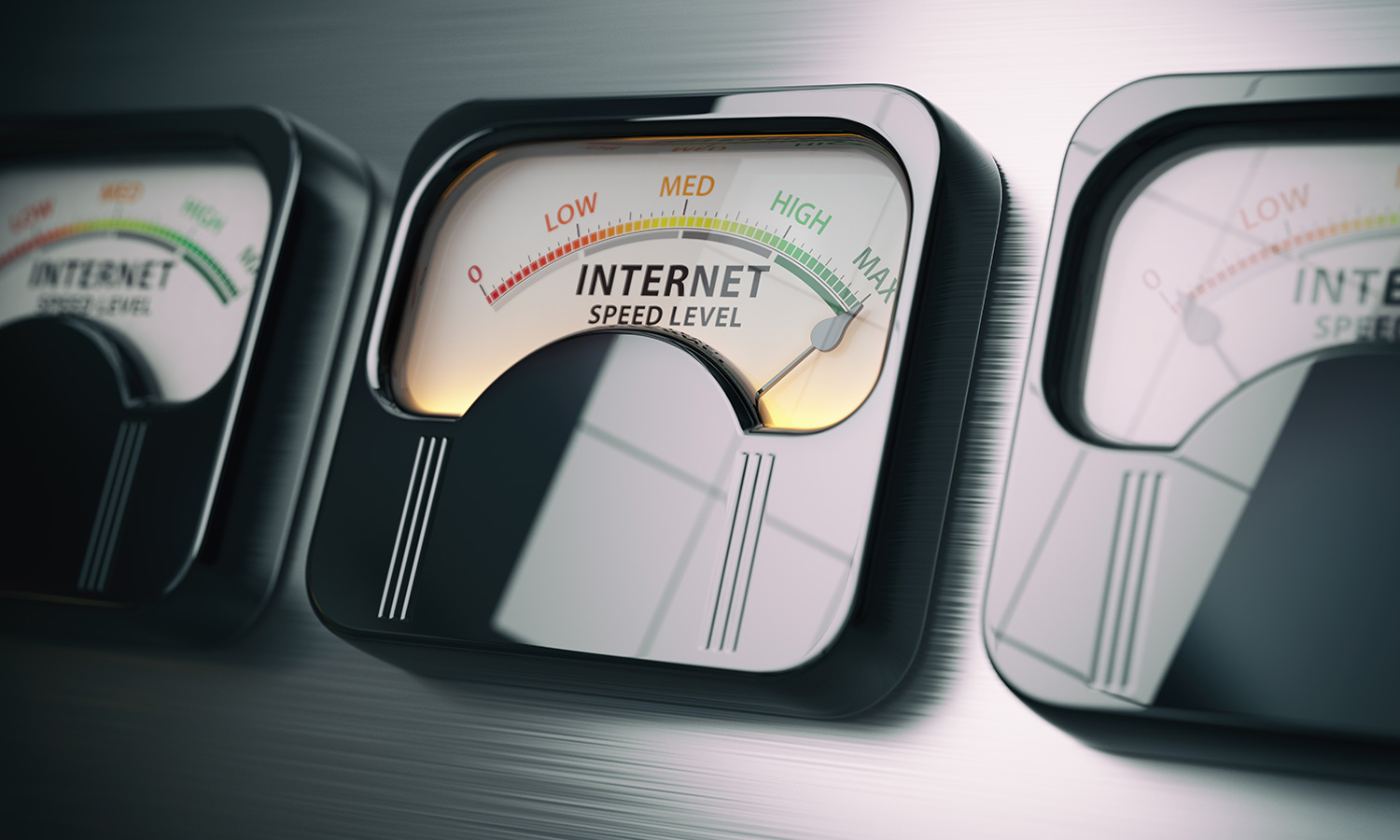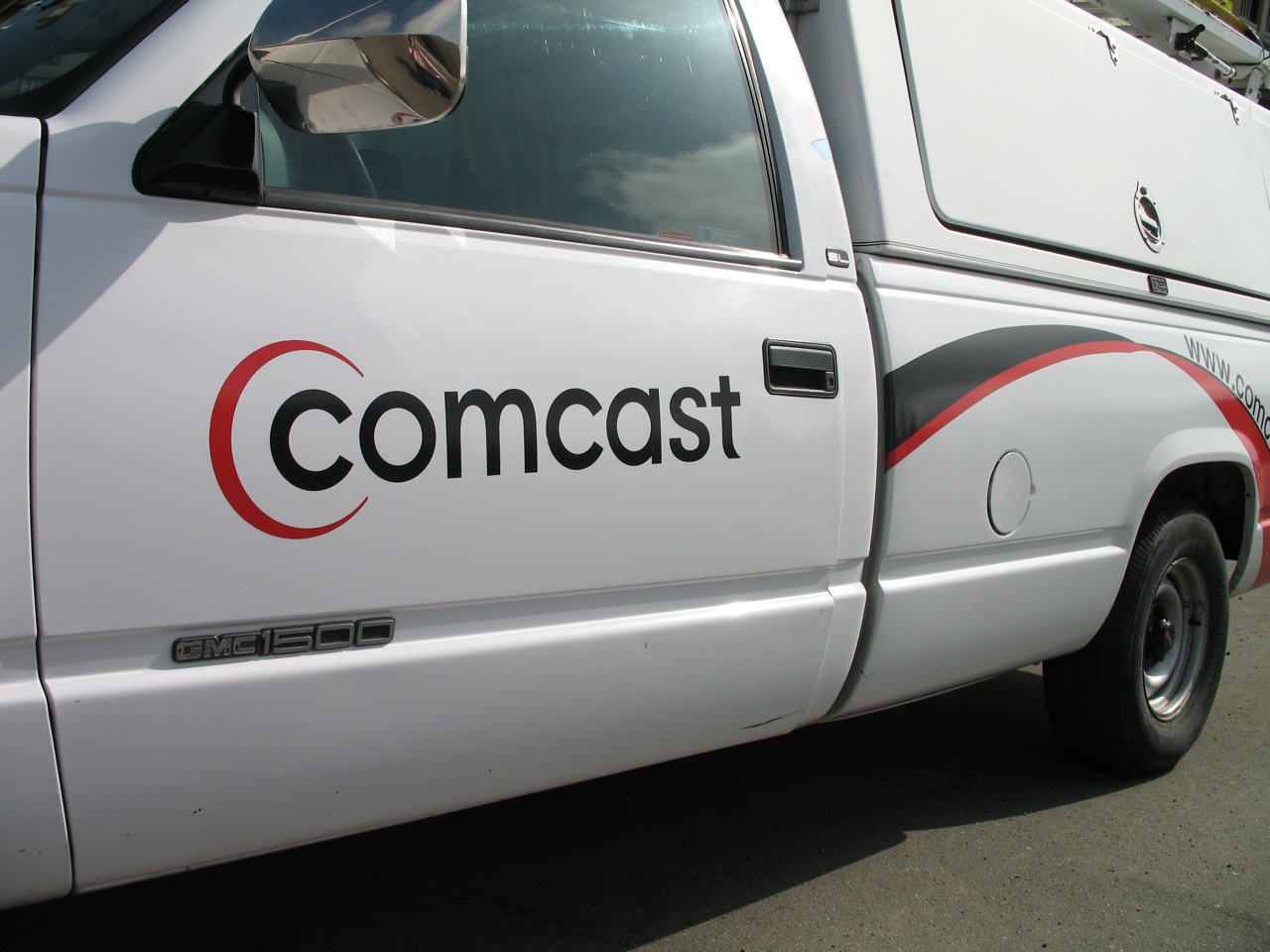How Much Internet Speed Should You Really Pay For?
What internet speed do I need? You probably ask yourself this question every time it’s time to renew your internet plan, if not every time you pay your bill. With increasing demands from streaming, gaming and connected devices – not to mention work and school – knowing which plan is right for you and your household isn’t the simplest question to answer. Here’s how to know if you’re paying too much, or if you’re really getting the service you need.
Internet connectivity is something of a moving target. The number of connected devices and users in our homes is growing quickly, and those devices are on more and more. Sometimes, you enjoy blazing speeds on your laptop, phone or tablet, and other times, you wonder why your connection is so slow. Maybe your game stalls when someone else in the house starts streaming music. Or maybe your Roku keeps buffering just as you’re getting to the best part of that movie on Netflix.
Tom’s Guide contacted broadband experts and some folks who work at internet service providers (ISPs) to see if you really need to pay extra for faster connectivity. Here’s what we found.
What internet speed do I need? Quick tips
- Netflix says you need 5 Mbps to stream full HD content and 25 Mbps for 4K Ultra HD content, but you’ll want faster speeds if you plan to connect several devices at once. The same holds true for other streaming services and game streaming services like Twitch.
- Multiple devices demand more bandwidth. If you’re planning to stream 4K video content and have multiple devices connecting to your network simultaneously, seriously consider investing in faster download speeds, like 200 Mbps, which should work for most households.
- Consider Gigabit, if it’s available. Serious data-hogs will want faster speeds and more bandwidth. Where it’s available, Gigabit speed internet plans are the best you can get for home connections.
- Know your speeds. Use one of the best speed test apps to check your internet connection speed and determine whether you’re really getting the bandwidth you’re paying for.
There is such a thing as too much speed
I know, I know — all the ISPs are telling you to get a faster plan. But you may be paying more than you need to.
“To select the best services or package for your usage, you must understand your bandwidth needs,” said Lincoln Lavoie, a senior engineer of broadband technologies at the University of New Hampshire InterOperability Laboratory.
“This [bandwidth] depends more on the applications being used (streaming is largely a downstream application), but as users start doing more things like video calls and movie sharing, upload also becomes very important,” Lavoie told Tom’s Guide. “Similarly, upload speeds are critical for people working remotely from home, as upload speeds would impact things like screen sharing and online conference calls.”
After a year of lockdowns, where people have handled everything from work to school right from home, having sufficient bandwidth for the whole family is more important than ever.
- More: Max out your connection with the top fast VPN

Another senior engineer, who works at a well-known ISP and spoke to Tom’s Guide on condition of anonymity, echoed that point, saying internet speeds ultimately depend on what the customer is doing with his or her internet connection. The person added that the “average family” shouldn’t pay for “anything beyond 20 x 5.” Companies like Spectrum, however, are offering 100Mbps download speeds as a baseline, so that should work exceedingly well for most.
How many Mbps do you really need?
| Number of devices | Use Cases | Recommended Download Speed |
| 1-2 | Web surfing, email, social networking, moderate video | Up to 25 Mbps |
| 3-5 | Online multiplayer gaming, 4K streaming | 50 – 100 Mbps |
| More than 5 | All of the above plus sharing large files and live streaming video. | 150 to 200 Mbps |
Another broadband expert told Tom’s Guide that the more bandwidth you have, the better, up to a point. Christopher Mitchell, director of the Community Broadband Networks Initiative at the Institute for Local Self-Reliance in Minneapolis, said this will ensure you have enough bandwidth when you really need it — for example, if you have a big file to upload or you’re doing sophisticated work on your network.
Gigabit speed offers 1,000 Mbps, an exponential increase over the 20 to 200 Mbps plans that are generally considered high-speed broadband. See our article What is Gig-Speed Internet? for a full exploration of what gigabit internet plans offer, what they cost and what they allow you to do.
However, “anything over 10 Gbps to a home user is pretty likely overkill,” Mitchell said. “Only a few networks in the U.S. do 10 Gbps. A gig everywhere should be a goal — not because people will max it out, but because it will ensure everyone can do what they want without worrying about the network being the bottleneck.”
As more people shift to streaming for their TV and movie watching needs, bandwidth requirements become a bigger issue. If you want to stream 4K content to get the best picture for your 4K smart TV, you’ll need a connection of at least 25 Mbps. Lower resolution content is less demanding, but even streaming 1080p HD video will require a 10 Mbps plan for smooth performance.
And that’s all assuming you only stream to one device at a time. If there’s more than one TV in your home, or you want to watch in the living room while someone else watches on a laptop in the kitchen, the bandwidth needs grow accordingly.
Smart home devices also bring new demand for bandwidth. It only takes a few devices, like a smart thermostat, a smart speaker and a smart lock, to start having an impact on your home’s connectivity speeds, so don’t forget to factor those into your thinking when you consider how many devices are in use in your home. Most experts recommend adding an extra 5 Mbps to your plan for every 10 smart devices, though some products, like cameras, will require much more.
The cost of connectivity
Though there’s debate over how much internet speed you need, it’s clear that ISPs benefit from your desire for faster internet speeds. But they can also provide some insight into how much speed you really need by listing how many devices can connect to the network at any given time.
According to a report by the The Internet & Television Association, the average American household pays $61 per month for internet service, but your costs will vary based on your plan and usage.
Comcast Xfinity, a prominent ISP in the U.S., has varying prices based on speed. If you listen to the above engineer, you can probably get away with the company’s cheapest package, which offers download speeds of up to 100 Mbps. The plan is available for new customers at $40 per month and, according to Xfinity, should be able to accommodate up to five devices simultaneously connecting to the internet.

Xfinity also delivers a connection with up to 200-Mbps download speeds for $55 per month. According to the company, that should be enough to accommodate up to eight devices simultaneously connecting to the internet.
Xfinity offers a 2Gbps connection for $300 per month with a two-year agreement. “Unlimited devices” should be able to connect to the web at that speed, the company says. But if you want more speed and a little less cost, consider Xfinity’s 1Gbps option that starts at $80 per month.
Beware of these pitfalls
In many cases, choosing your internet connection speed means weighing how much you’re hoping to get versus how much you’re willing to pay. But you need to be ready for the possibility that you won’t get what you want.
Most ISPs offer internet packages with an important caveat: “up to.” In other words, for the average residential internet customer, ISPs aren’t guaranteeing a certain download or upload speed. So, if you’re paying for a 25-Mbps package, you may get that speed (if not more) at times. But it’s also possible that you’ll get less.
But even if your ISP is delivering the speeds you want, the number of devices simultaneously connecting to your network could give you some trouble that could ultimately slow down your connection. With everything from laptops and smartphones to TVs and connected appliances relying on a steady stream of data, it’s easy to underestimate your needs.
“Internet connections serve households or businesses that have multiple users that each have multiple devices (sometimes more than 10 per person, ultimately),” Mitchell said. “They create congestion in unexpected ways — you may not need a 100-Mbps connection most of the day, but when you need it, you want it there. Much like a car can go 100 mph, but we rarely drive it that way.”
So, how can you tell if your network needs a boost? Lavoie said to look for “quality of experience” metrics, including load times, the number of connectivity glitches and connection drop-outs. It’s also important to use online speed-check tools, like the aforementioned Fast.com or others, to see at what speed you start to experience problems.
What about online gaming?
If you’re an avid gamer, playing online with friends might be one of the things you enjoy most. And having faster internet is really important for that.
Over on its support forums, Microsoft offers a handy reference document to help you know how fast your internet speeds should be to accommodate online play. According to the document, you’ll want a download speed of 3 Mbps or better and an upload speed of 0.5 Mbps or better. Your ping rate (a measure of lag your Internet connection causes in online gaming) should also be less than 150 milliseconds.
Sony and Nintendo recommend the same speeds.
- Make the most of your monstrous speeds by using a gaming VPN
Twitch and game streaming
When it’s time to stream games between friends on Twitch, you’ll need faster connectivity, according to Microsoft and other game companies. According to Twitch’s broadcasting guidelines, you’ll need a bit rate of at least 2.5 to 4 Mbps to play at 720p and 30 frames per second. It then goes up to 3.5 to 5 Mbps for 720p at 60 fps.

If you want to stream at 1080p and 30 fps, you need 3.5 to 5 Mbps as well, and 1080p at 60 fps demands 4.5 to 6 Mbps.
Are speeds changing?
The good news is that internet speeds are improving. A 2020 study from internet speed-test company Ookla found that the average download speed increased by 19.6% for fixed home broadband connections between 2019 and 2020.
Gigabit speed connections, once limited to specific neighborhoods in only the largest cities, is now more widely available than ever. According to the The Internet & Television Association, gigabit service is available to more than 80% of households in the United States, with gigabit speed connections offered in more than 40 states. (See our guide to learn what is gigabit Internet.)
How much speed do I have?
Before you can make an informed decision about your Internet speed, it’s important that you find out how much speed you’re actually getting right now. And there are plenty of places to find that out.
Popular tools for measuring internet speed include Ookla Speedtest and Netflix’s Fast.com, which you can pull up on your laptop in any web browser for free. Even better, you can also get dedicated smartphone apps for those same tools, with free apps for both Ookla Speedtest (Android / iOS) and Fast.com (Android / iOS).
There are also similar tools provided by various broadband companies, if you want to use a tool that’s specific to your Internet service provider:
Regularly checking your connection speeds will not only give you a good idea of whether you’re getting the services you pay for, but also how well-suited your connection is to uses like streaming in 4K or online gaming.
What’s going on with 5G?
While most discussion of home internet service centers around fixed broadband and fiber connections, the reliance on wireline connectivity to meet the needs of an entire home is starting to shift dramatically. As 5G wireless technology starts to roll out across the country, there is a push to use the faster speeds of 5G for in-home broadband, as well as mobile connectivity.
The potential speeds promised by 5G are an incredible jump forward, with download speeds ranging from from 150 Mbps to more than 1 Gbps in some tests. That’s an enormous improvement over 4G, which ranges from 30-60 Mbps. That’s also fast enough that you could conceivably use a 5G connection to meet all of your home internet needs instead of traditional wired broadband.
Wireless carriers — including Verizon, AT&T, Sprint and T-Mobile — have already introduced 5G connectivity across their networks, and coverage has spread to major cities and markets. Once 5G speeds come to your area, the mobile technology could give your current ISP a run for its money.
However, there’s still a way to go before 5G in the home becomes a viable option. First, 5G service needs to roll out to more of the country. It’s offered in some cities, but rural coverage isn’t wide spread, and networks are still being built out and refined.
There’s also the question of price, as most data plans from carriers are still mobile-oriented, and come with data caps and restrictions that aren’t as flexible as current fixed broadband.
The hardware for in-home use is also a little different, with exterior 5G antennas to pull in the signal, and 5G-friendly routers then divvying up the connection throughout the home. These products are still in the early days, so don’t count on ditching your cable just yet.
Bottom line
Ultimately, deciding on the internet speeds you need isn’t as simple as it looks — or as simple as ISPs want you to believe. According to the experts, you need to think about the number of devices that will simultaneously connect to your network and exactly what you want to do with your connection. If it’s just streaming and web surfing you’re after, you likely won’t need much. But if you’re looking to stream 4K video, play online games and connect multiple devices, you’ll need more bandwidth, for which you’ll have to pay more.
And what you pay for may not be what you get. You should periodically analyze your network speeds to see what’s happening during slowdown or connectivity loss, as well as regular usage. If you aren’t seeing the speeds you’re paying for, it may be time to call your service provider.
For all the latest Technology News Click Here
For the latest news and updates, follow us on Google News.
